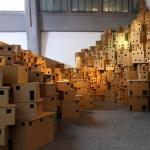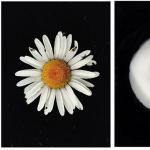None of the regulatory legal acts of Russia contains a definition of “domestic territory”.
At whose expense should it be done?
In accordance with Housing Code all expenses for maintaining the common property of the house are divided between the owners in proportion to the area of their apartments, and since the adjacent territory belongs to joint property, then payment for street light falls on the shoulders of the owners. Expenses for street lighting are calculated using a common building meter and are included monthly in the residents' receipts.
Reference! If it is not documented that the territory around the house belongs to common property, the inclusion of such a line of expenses in the payment receipts is unlawful and can serve as the beginning of legal proceedings.
Return home to dark time day is much more pleasant and safer in the illuminated courtyard than getting to own apartment in the dark, shuddering at every rustle. The lack of light in the yard is a reason to contact management company or administration.
Lighting in entrances residential buildings- quite an overhead item for any community of homeowners. Therefore, the question of saving on this type of expense is raised quite often.
Some people reduce the light level by unscrewing some of the lamps, while others optimize the control circuit. We will talk about the possibilities of such optimization in our article.
Requirements for the level and method of controlling illumination of entrances
Lighting standards for various parts of the entrance and utility rooms
Before embarking on questions about the possibility of automating lighting control systems, you should understand the standards imposed by various regulations to this parameter. After all, this will allow us not only to arrange our lamps as efficiently as possible, but will also give us the opportunity to use the optimal automation system in our case.
- As you already understand, GOST entrance lighting for different rooms has a different standard. It is standardized in Table 1 VSN 59 - 88. According to this standard, two types of illumination are distinguished - illumination from fluorescent lamps and incandescent lamps. By the way, the so-called energy-efficient lamps are fluorescent.
- First of all, let's look at staircases and floor corridors. The illumination of these areas when using fluorescent lamps should be 10 lux, but if incandescent lamps are used, then the norm is 5 lux. In this case, the standardization plane is the steps and the floor of the corridor.

- GOST for lighting of entrances with elevators is somewhat different. Thus, elevator halls should have an illumination of 20 lux when using fluorescent lamps and 7 lux for incandescent lamps. At the same time, according to clause 2.27 of VSN 59 - 88, the lamp must be installed in such a way that part of the luminous flux is directed towards the elevator doors. The lighting of entrance halls must meet similar requirements.
- If there are wheelchair spaces at the entrance, they should be illuminated using incandescent lamps. In this case, the standard illumination for them is 20 lux, and the normalized surface is the floor.
- Elevator shafts, unless they are made with mesh fencing, must also have lighting. For them, the norm is 5 lux and is given only for incandescent lamps. In this case, a conventional surface three meters from the lamp is taken as the standardized surface.
- GOST lighting for entrances must also correspond to rooms such as a basement or attic. It is recommended to use only incandescent lamps for them. The lighting standard is 10 lux. In this case, not the entire room should be illuminated, but only the main passages. The same standards apply to garbage collection chambers, electrical switchboards and other similar premises.
Note! What, in addition to lighting standards for various rooms, there are standards for light pulsation, color rendering and some other parameters that entrance lighting must also comply with. These standards are given in SNiP II-4-79.
Standards for controlling entrance lighting
Automatic lighting in entrances is constantly being modernized. More and more complex and energy-efficient circuits are emerging, and regulations do not always keep up with these changes.

So:
- First of all, it should be remembered that, according to clause 8.1 of VSN 59 - 88, with any method of lighting automation it must be possible to turn it on manually at any time of the day. This is necessary for both repair work, and for various unforeseen situations.
- When installing automation systems that respond to room illumination, timely switching on of lighting for rooms with different natural light levels must be provided. This can be achieved by turning on all the lights when the light level is reduced in the darkest place, or by installing additional light sensors.
- When using a variety of sensors, evacuation or emergency lighting must be provided that turns on a regular switch in addition to automation. With the onset of darkness, it should be constantly on.
- According to clause 8.15 of VSN 59 - 88, switching devices for turning on the attic lighting must be located outside this room. They are usually located at the entrance. If there are several such inputs, then a switching device must be installed on each one.
- All lighting switching devices must ensure that the phase wire is broken. In this case, the presence of phase must be ensured on the secondary circuits of the lighting control system.
Automation schemes for entrance lighting
At the moment, a wide variety of automatic entrance lighting systems have been developed and implemented. Analyzing each scheme will take a lot of time, especially since they are often intertwined and combined with each other, so we will consider only the most common and, in our opinion, successful options.
After all, for each individual entrance, the most relevant will be its own lighting scheme, which takes into account the geography of the entrance, location features, number of floors of the building, the consciousness of the homeowners and many other aspects.
Lighting control using push-button stations
This method of lighting control will be successful for low-rise buildings with a sufficient number of conscious citizens. After all, it only provides an opportunity to save, and the residents of the entrance must directly implement these savings.
Its main advantage is its simplicity and price, which is significantly lower than all the options listed below.
So:
- Depending on the type of entrance this type has several controls possible options. In the first option, this is a push-button post located at the entrance to the entrance, as well as on each floor. When entering the entrance, a person presses the button to turn on the light, and the button pulls the switch to turn on the lighting of the entire entrance. When a person enters home, he presses the light off button, the starter coil is de-energized and the light goes out.
- The second option involves the possibility of turning on the lighting of only the stairwell from the push-button station. In this case, the floor corridors are switched on from individual push-button posts and act on their own starter. This option is more economical, but somewhat more difficult and expensive to implement.
Perhaps, each of us at least once in our lives had to walk without lighting along the stairwell of an entrance in complete darkness in the regions of Russia. And even if in this case it was possible to safely overcome all the steps, the unpleasant sensations we suffered would still remain for a long time. This means that in order to completely eliminate the possibility of something like this happening again, it is necessary to properly organize reliable and comfortable lighting for stairs.
The main task when controlling the lighting of staircases is to ensure safe and comfortable movement for all people passing through it. To do this, the light must be directed at the steps from above and clearly highlight the contours of each of them. In addition, the light should create soft rather than harsh shadows to improve people's spatial orientation. It should also be taken into account that well-lit walls create a feeling of security in a person.
Emergency lighting for staircases should also be considered. In case of unforeseen or critical situations, it will help to avoid unnecessary risks.
The AKTEY company in the regions of Russia will be able to offer you at least 10 solutions for staircase lighting for every taste and budget. You can buy our solutions from us or from our dealers in any region of Russia.
Lighting standards for staircases
The level of illumination in staircases is standardized by SNiP 23-05-95* “Natural and artificial lighting”, it ranges from 50 to 100 lux. Special attention it is necessary to pay attention to the contrast of the steps when lighting them, but at the same time the lamps should not dazzle people passing along flight of stairs. Therefore, light sources are usually placed on ceilings or high on walls.
The most functional and complete solution in the AKTEI portfolio is the LED lamp SA-7008U of the Perseus series. This intelligent product always works in the presence of people, and at the moment when there is no one on the stairs, it turns off completely or goes into standby mode. At this moment, only natural lighting of the staircases of residential buildings works. SA-7008U does not require replacement of lamps; when using this solution, there is no need for any maintenance during the entire period of operation.
The polycarbonate housing, on the one hand, ensures a high light output from the LED module, and on the other hand, significantly reduces glare. The streamlined shape allows the lamps to be used as decorative elements premises. The body of the lamp is made of polycarbonate, which, on the one hand, has high light transmission capabilities, and on the other hand, evenly distributes the light flow without causing a blinding effect. The impact resistance of this material and the special streamlined shape provide excellent vandal resistance.
How to make lighting on a staircase?
 In addition to the fact that the lighting of stairs and landings in the entrances of residential buildings is intended to ensure the safety and comfort of the residents of the house, it must be energy-saving and vandal-proof, that is, protected from external destruction, breakdown and theft. The use of lamps with sensors will allow you to save up to 98% of electricity on lighting. Anti-vandal protection of LED lamps is provided by a durable polycarbonate housing; special fasteners protect against theft.
In addition to the fact that the lighting of stairs and landings in the entrances of residential buildings is intended to ensure the safety and comfort of the residents of the house, it must be energy-saving and vandal-proof, that is, protected from external destruction, breakdown and theft. The use of lamps with sensors will allow you to save up to 98% of electricity on lighting. Anti-vandal protection of LED lamps is provided by a durable polycarbonate housing; special fasteners protect against theft.
Since luminaires on staircases and flights often work around the clock, the absolute value of the savings, both in Watts and in rubles, can be quite significant.
At AKTEY you can choose the optimal solution for your staircase from the following options:
- LED lamps of the Perseus series - SA-7008U, SA-7006, SA-7006D, SA-7106E;
- LED lamps DBB 64-08 and DBB 64-08D;
- lamps and sockets with sensors for lamps with E27 socket - CA-18, CA-19, CA-20.
LED lamp SA-7008U, Perseus series
Characteristics:
Peculiarities:
|
 |
Energy-saving LED lamp for housing and communal services SA-7006D, "Perseus" series
Characteristics:
Peculiarities:
|
 |
Energy-saving lamp SA-18 optical-acoustic
Characteristics:
Peculiarities:
|
 |




